Video
youtube
Chance Work: Artist Statement
Agents of chance, both human and random, act upon all artworks to some degree. In this work, I tried to extend the action of chance upon the artwork by allowing it to drive each aspect of the process. Inspired by Nicole Wong’s ‘Waiting Game’ (2015), I began by creating a piece of music using statistical chance within set boundaries, rolling a 12-sided die to determine the pitch of the note above middle C and a 6-sided die to determine how many beats that note would be held for. I then played this on the keyboard and corrected the timing of the notes in Garage Band so that they accurately reflected the initial chance encounter. Inspired by John Cage’s experimental scores such as ‘Fontana Mix’ (1958), I further transformed the sound through human agents of change, representing it (as felt most natural to me) as a continuous line that changed in response to the music’s pitch and rhythm. Black paint was used on a large scale to give the physical part of the artwork the same presence as the audio, inspired by large expressive works that use the artists whole body and so force the artist to relinquish control over the work (such as Lilibeth Cuenca Rasmussen's “Loving Care” (1992-1996)). Audience members were also invited to paint their own interpretation of the sound on the paper, so that I could gather a range of responses to the audio and further give my work over to transformation by external forces.
References:
Vicky Browne ‘Chance: John Fontana ‘Fontana Mix’ (1958) viewed in class May 23, 2018
Lilibeth Cuenca Rasmussen's ‘Loving Care’ (1992-1996), accessed May 27 2018, https://www.flickr.com/photos/bloggy/2306364690
Museum of Contemporary Art 2015, ‘Nicole Wong: 21st Biennale of Sydney’ accessed May 29 2018, <https://www.mca.com.au/artists-works/exhibitions/21st-biennale-of-sydney/nicole-wong-21st-biennale-sydney/>
3 notes
·
View notes
Video
youtube
Jade adding to the final artwork in class.
1 note
·
View note
Video
Part of the process - my younger brother notating the chance music (upside down) over my mum’s and my representations.
1 note
·
View note
Photo


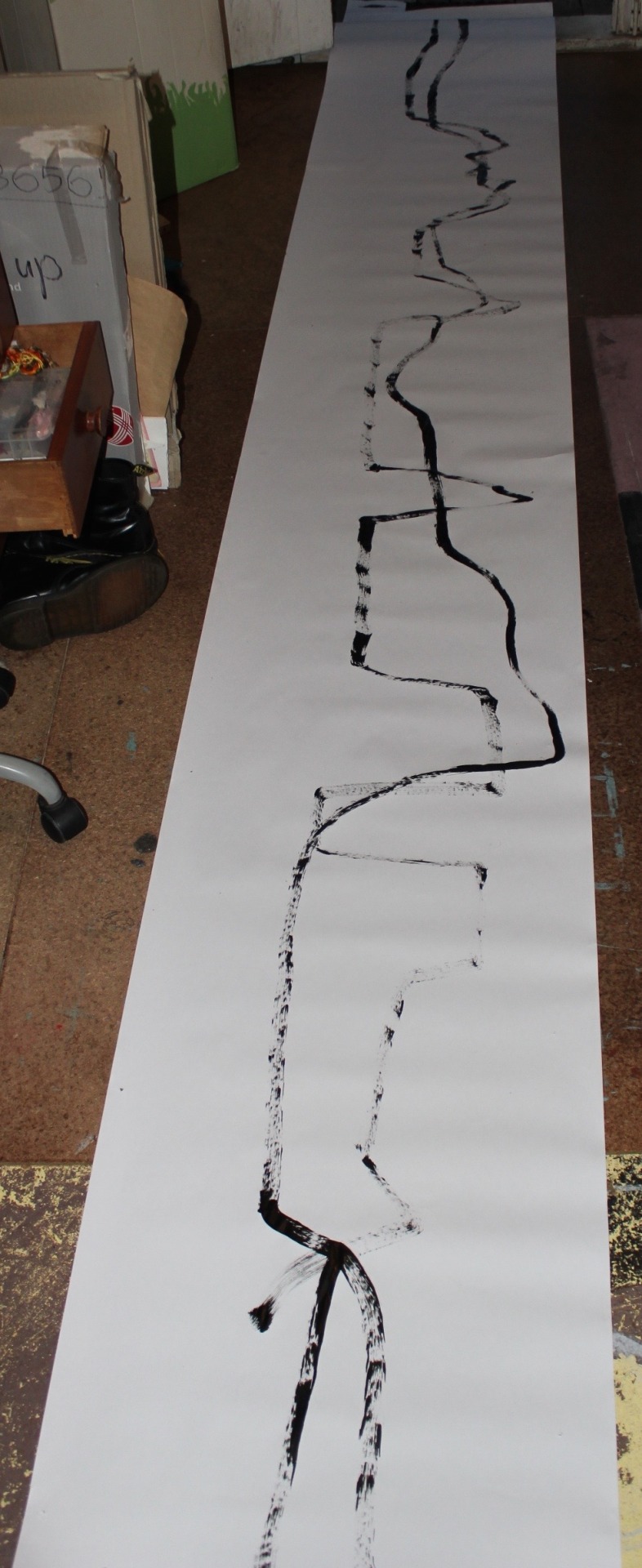
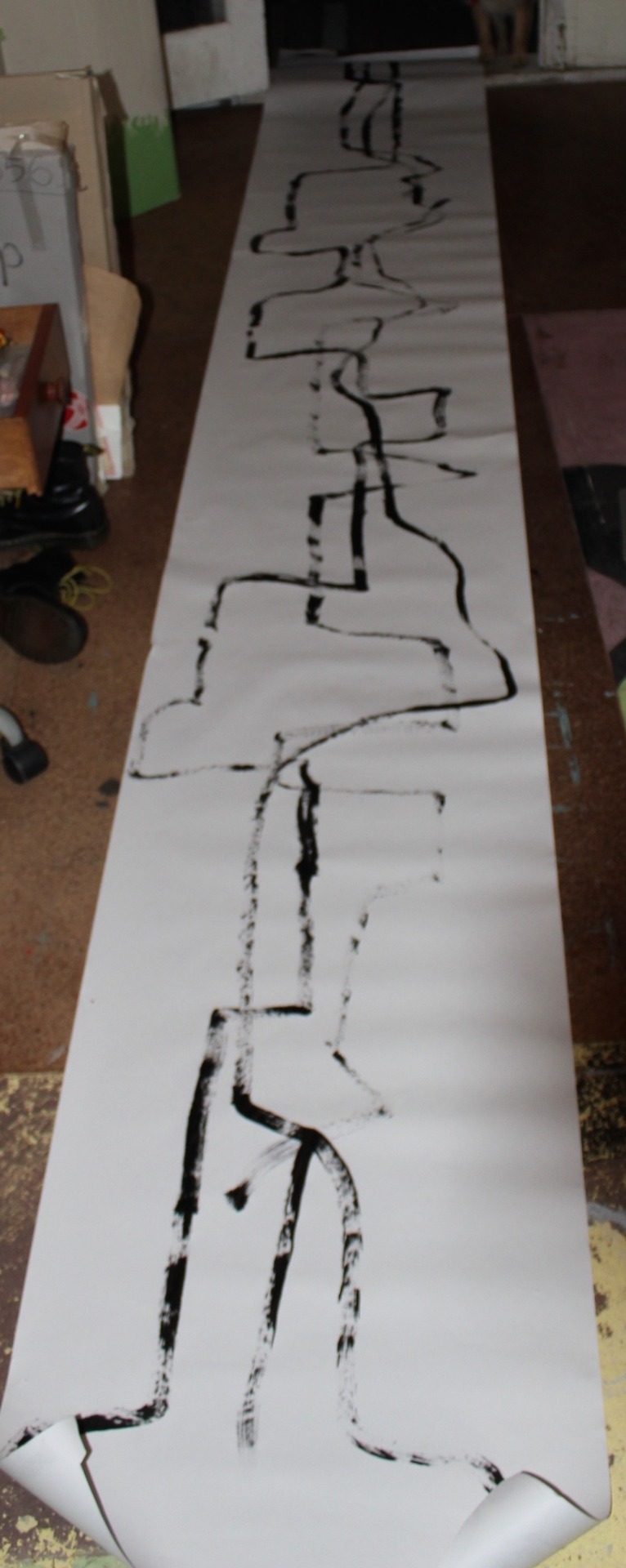
Experiment 5: Black paint, Paper, Brush, laptop, ground
Inspired by John Cage’s non-traditional representations of music and gestural painting styles such as Lilibeth Cuenca Rasmussen's "Loving Care" (1992-1996, picture below from https://www.flickr.com/photos/bloggy/2306364690) in which she painted using her head as a paintbrush, I felt this would be more effective as a large scale work, particularly as it has to have a similar sense of scale and engagement as the sound.

In this painting, standing and sitting I followed the sound (pitch, dynamics and note length) of the chance music I created with my brush. I enjoyed the dry-brush technique which resulted from me taking less care with my lines compared to my last painting experiment. Also due to the spontaneity of the painting, I reached the end of the paper before the end of the song, and was unsure whether to start from the other end or just leave it.
I then asked my mother to make her own representation, which she did using the same materials but standing up, walking backwards along the paper. Additionally, she chose to paint the sound with more straight lines and angles, and she managed to fit in the whole song, so while our representations begin together, they divert. Then I asked my younger brother to do the same thing, and he represented the music ‘upside down’ to the way my mother and I notated it.
To continue the chance theme, I may ask class members to contribute a representation to the work on the day.
1 note
·
View note
Audio
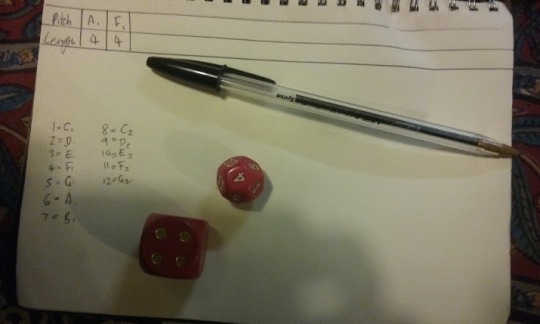

Experiment 4: two dice, Garage Band, pen and paper.
This experiment was inspired both by John Cage’s experimental music and by Nicole Wong’s chance works seen at the MCA. In particular, I was inspired by Wong’s ‘Waiting Game’, 2015, in which she rolled a 20-sided die, each face of the object determining the diameter of a dot that she would transcribe on paper (MCA, 2018).
This is my first chance piece of music - I rolled a 12 sided die to determine the pitch (1 was middle C and the numbers went up from there only using the white keys) and then a 6 sided die to determine the number of beats the sound would be held for.
I then played this on the keyboard in Garageband, edited the midi files to make them correspond to my numbers more precisely, and edited the instrument to be ‘Classical Female Ensemble’, as that felt most fitting.
I am pleased with how this turned out - the beginning in particular is pretty beautiful, and I’d like to try experimenting with combining the visual representations and the sound representations of the chance numbers I am generating - e.g. in a textile or painting work as suggested in our class critics.
References
Museum of Contemporary Art 2015, ‘Nicole Wong: 21st Biennale of Sydney’ accessed May 29 2018, <https://www.mca.com.au/artists-works/exhibitions/21st-biennale-of-sydney/nicole-wong-21st-biennale-sydney/>
1 note
·
View note
Photo


Class Drawings, Week 12
Today we generated chance drawings in the gallery driven by instructions. The above are my and Jade’s drawings, which we swapped halfway through. I really enjoy how the disparate drawings come together.
3 notes
·
View notes
Photo
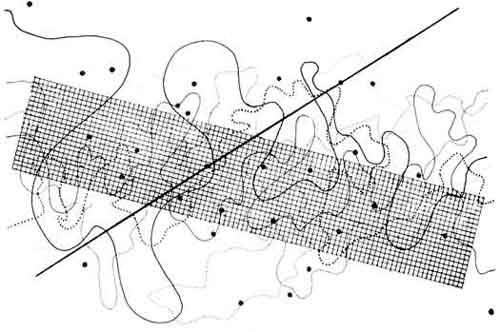
Today I was inspired looking at John Fontana’s experimental scores, such as Fontana Mix (1958) pictured above. In these works, transparent material with random markings, lines and grids are overlaid randomly, creating an abstract and every changing score to be interpreted by the musician.
I was interested in continuing with my random numbers, but integrating the painting/visual representations with musical representations. For instance, I could roll a die or generate numbers randomly online to determine the pitch and length of notes, and also generate a visual representation of this score.
1 note
·
View note
Photo
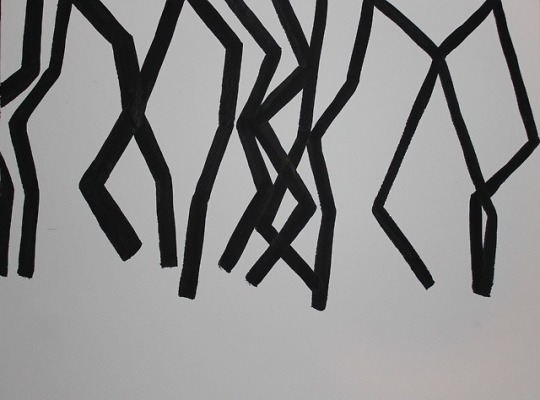
Experiment 3: Ink, Paper
From the line graphs I created using the random-generated integers, I copied the lines by sight by painting ink onto paper, without a ruler. I liked the transformative aspect of this, and the additional layers of chance by human error, as I didn’t get all angles exactly right, and the lines became thicker as I went on. I would be interested in expressing this in a different form - maybe through using felt or fabric to replicate the random lines, and making them into a sculpture, or printing textiles with the lines.
0 notes
Photo
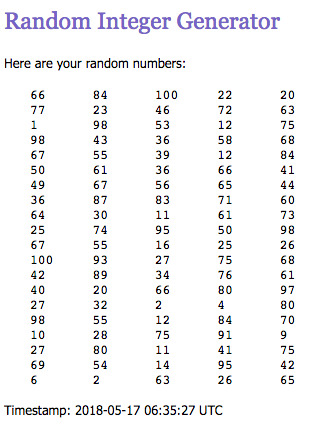

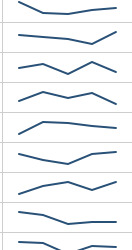
Moving on from my physical experimentation with chance, I wanted to experiment with a digital experiment with chance. Using a random integer generator from Random.org (for numbers between 1 - 100), I generated 100 random integers in 5 columns. I then pasted this into Excel, and generated line graphs for each row of numbers - I enjoy the appearance of the lines together as well as the way they move when you scroll over them and may formulate an experiment in translating them through animation/painting/sculpture.
1 note
·
View note
Photo

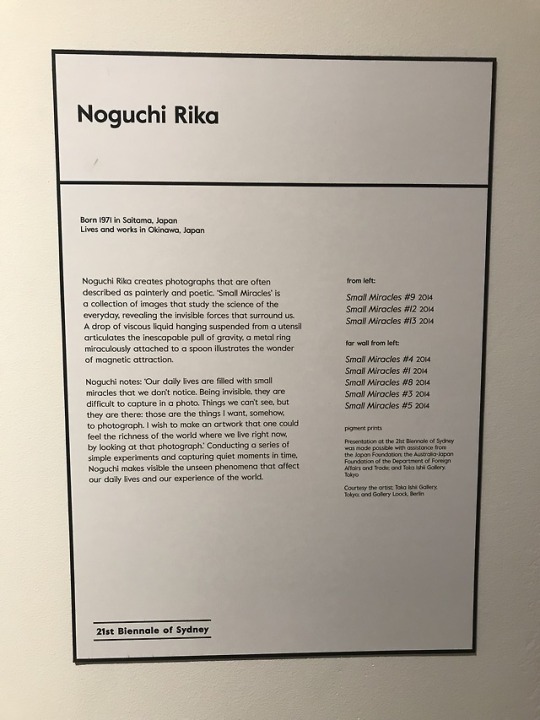
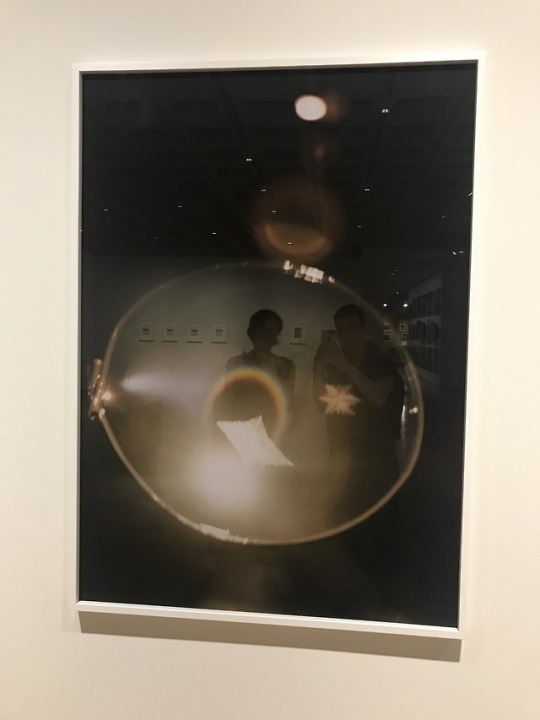
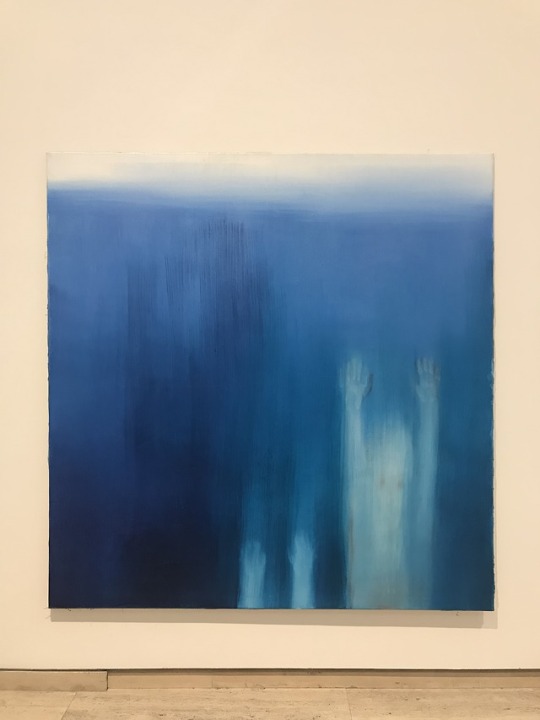
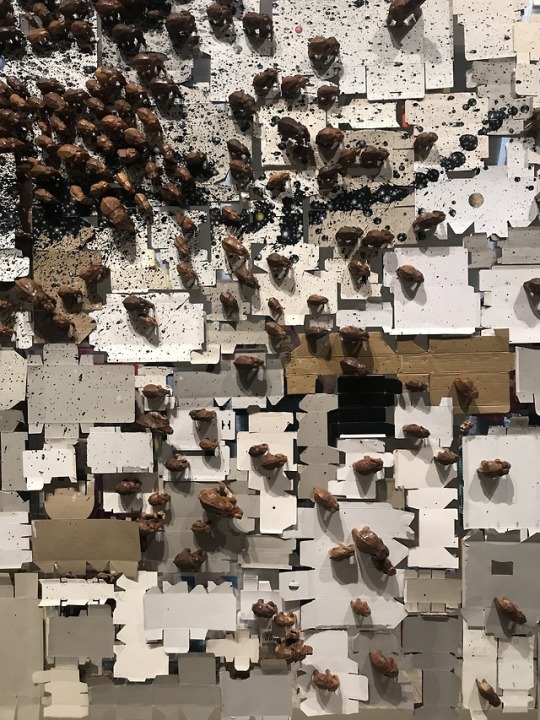

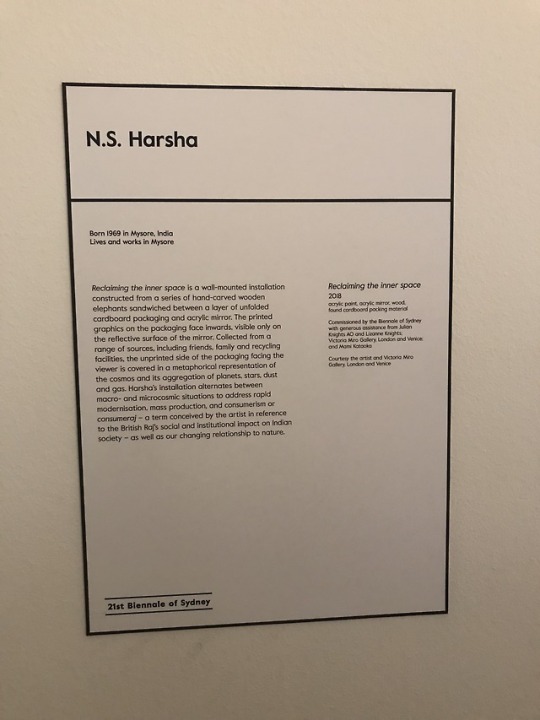
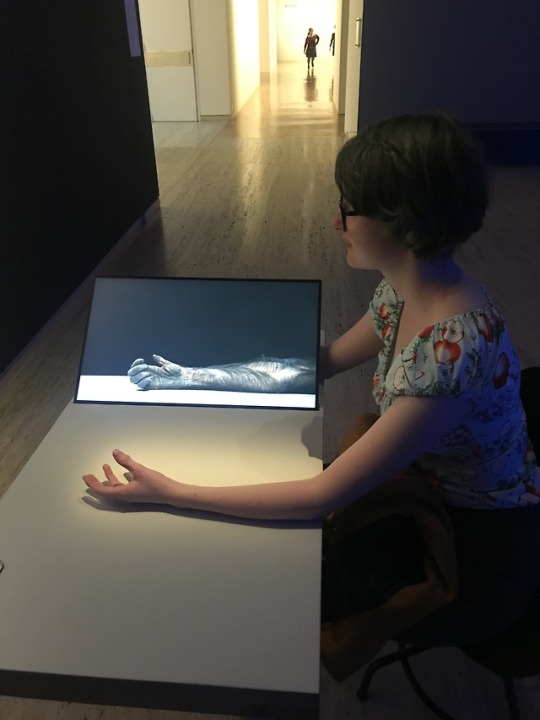
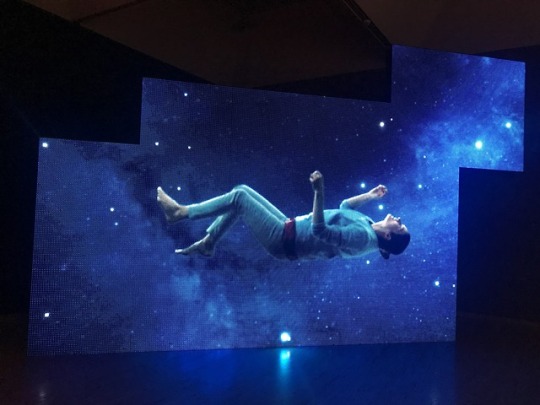
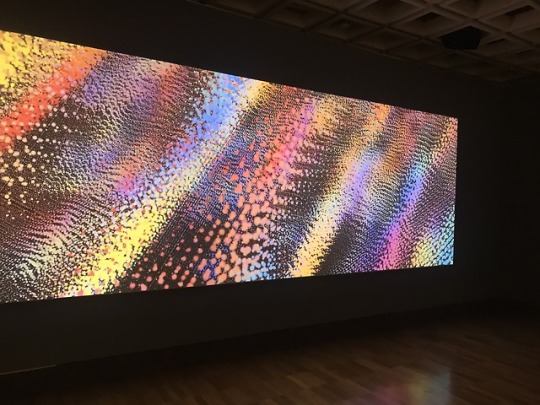
Repetition Task 1
Themes of reflection and iridescence
3 notes
·
View notes
Photo


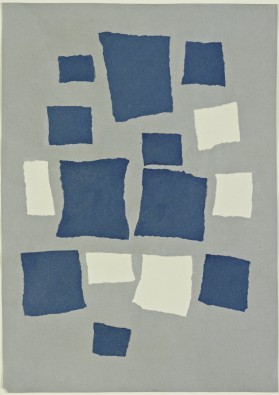
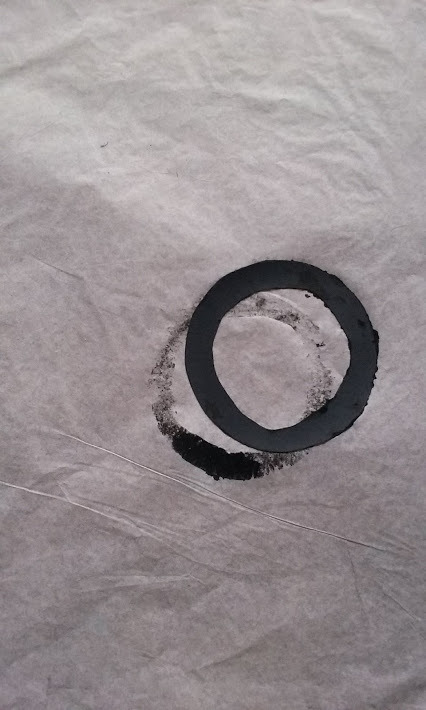
Experiment: ink, tissue paper, card, gravity
To start working on my own project, I decided to revisit the original inspiration for our group project, Jean (Hans) Arp’s “Untitled (Collage with Squares Arranged according to the Laws of Chance)” (3rd Image).
I was thinking of starting with another concept, but as Vicky pointed out, why not start somewhere that you’ve already put in the research. Since I’m interested in using print-making and textile techniques, after discussing Gyotaku, or Japanese fish printing in class I decided to do a printmaking version of ‘Arranged according to the Laws of Chance’. Using a jar lid, scissors and a stencil knife I cut out a circle, covered one side and dropped it repeatedly from about 1 metre off the ground on to a piece of tissue paper, and pressed in the circle where it landed to help imprint the ink. I found the higher I dropped the circle from, the higher the variability of the composition. Additionally, I found other elements of chance interrupting I hadn’t anticipated - my dog crumpling the paper, the circle landing upside-down, causing a faint print, the warping of the paper, the paper tearing when I left the circle on too long etc.
It also reinforces to me how much Jean Arp’s work is BS, there’s no way that beautiful grid happened by chance unless he dropped them from an inch off the paper. I was interested in the discarded bits of my work as well - the ink-covered paper circle I printed with, and the scrap paper on which I painted the circle (Image 2) both had interesting qualities to me.
0 notes
Text
I mean I’m proud of us.
In-class failure task
In class this week we looked at failure, designing a list of actions in groups that could not be completed.
Our group designed three failure tasks, which we then tried to perform:
1. scale a flat wall
vimeo
2. draw a realistic self portrait using only your feet
vimeo
3. eat some food without using your hands
youtube
3 notes
·
View notes
Photo
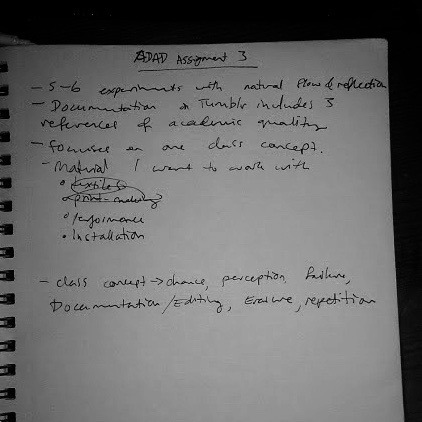
Brainstorm for Assessment 3: Essentially, I think I’d like to work in some combination of textiles, printmaking and/or sculpture, and explore one of the following concepts: repetition, erasure, chance, documentation/editing.
0 notes
Text
Final Artwork: A Violent Action
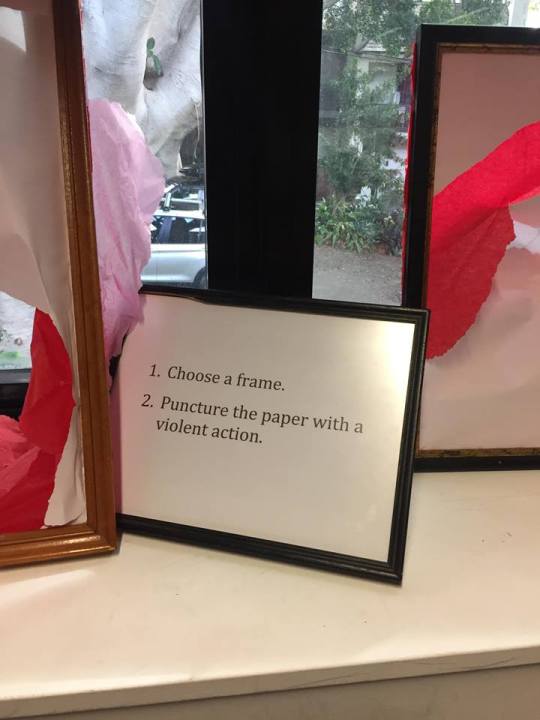
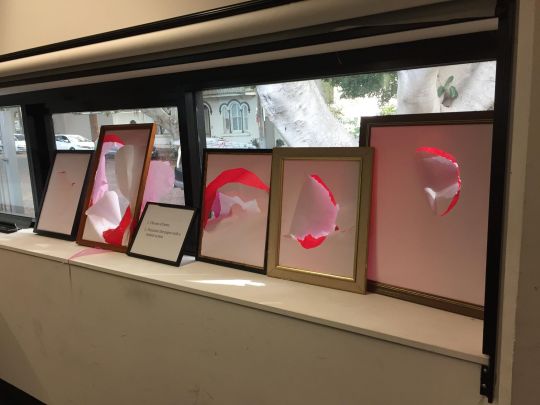
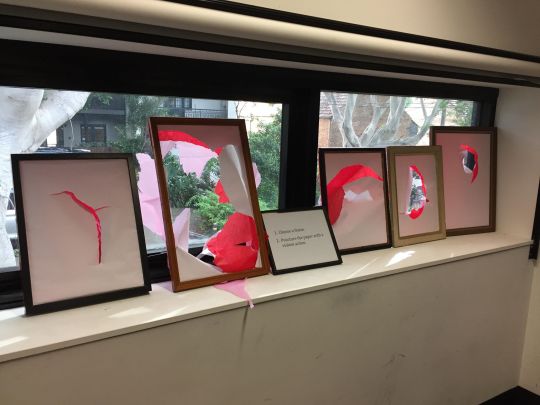
Final Statement: A Violent Action
Our artwork is inspired by Jean Arp’s Collage with Squares Arranged According to the Laws of Chance (1916-1917), and draws upon his idea of external forces informing the outcome of the artwork.
As a group, we collaborated to develop a concept based on this idea, playing with how we would exhibit the final artwork. Our initial ideas centered around us - the artists - as sole creators of a work shaped by unpredictable physical forces, however we eventually gravitated toward making the work a collaborative experience that requires the input of its audience. Thus, while we provide the framework and loose instructions, we rely on the use of the audience as the final step in the work, leaving it’s outcome entirely up to them.
We started developing the physical components of our work by selecting five empty frames, a large roll of thin white paper and numerous sheets of coloured tissue paper. Together we stretched and glued the pieces of paper over the backs of the frames in layers - the white paper visible from the front of the frame and two layers of red and pink tissue paper respectively placed behind it. The audience will be asked to interact with the work using an ambiguous instruction: ‘Puncture the paper using a violent action.’ After every member of the audience has followed the instructions, we collect the works and document them in their final, unforeseeable form.
6 notes
·
View notes
Text
Final Statement
A Violent Action
Our artwork is inspired by Jean Arp’s Collage with Squares Arranged According to the Laws of Chance (1916-1917), and draws upon his idea of external forces informing the outcome of the artwork.
As a group, we collaborated to develop a concept based on this idea, playing with how we would exhibit the final artwork. Our initial ideas centered around us - the artists - as sole creators of a work shaped by unpredictable physical forces, however we eventually gravitated toward making the work a collaborative experience that requires the input of its audience. Thus, while we provide the framework and loose instructions, we rely on the use of the audience as the final step in the work, leaving it’s outcome entirely up to them.
We started developing the physical components of our work by selecting five empty frames, a large roll of thin white paper and numerous sheets of coloured tissue paper. Together we stretched and glued the pieces of paper over the backs of the frames in layers - the white paper visible from the front of the frame and two layers of red and pink tissue paper respectively placed behind it. The audience will be asked to interact with the work using an ambiguous instruction: ‘Puncture the paper using a violent action.’ After every member of the audience has followed the instructions, we collect the works and document them in their final, unforeseeable form.
2 notes
·
View notes
Photo
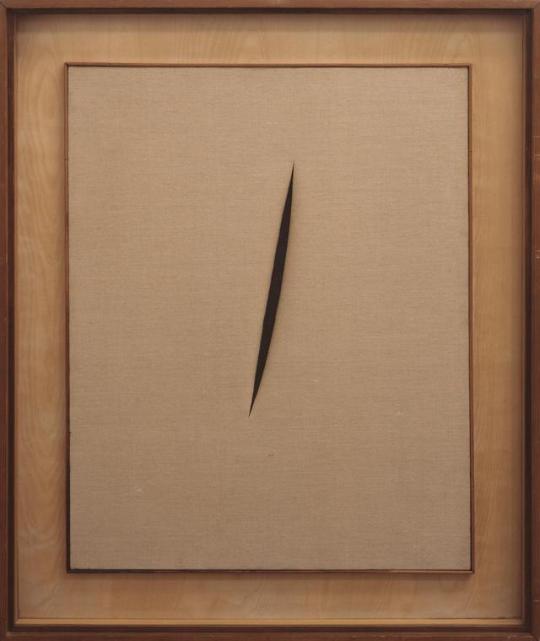
When preparing and testing our paper sculptures for our durational interactive/performance artwork next week, we realised that our work also has similar elements to that of Lucio Fontana’s Spatial Concept ‘Waiting’ (1960). In this work, the artist has cut the canvas, adding a third dimension, creating interesting compositional value and implying connotations of violence and movement that are also implicit in our work.
4 notes
·
View notes